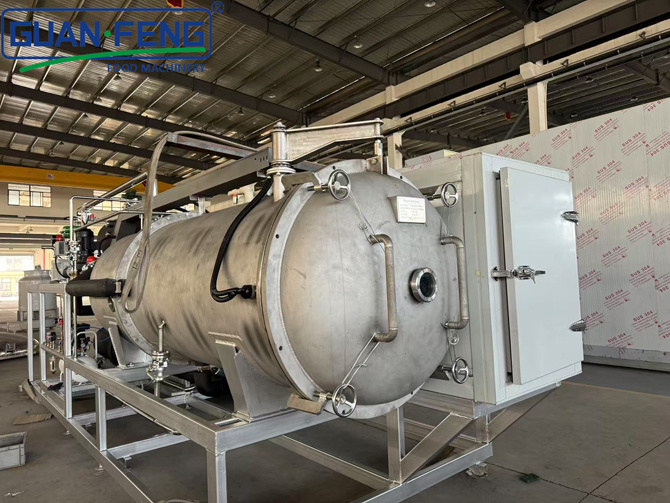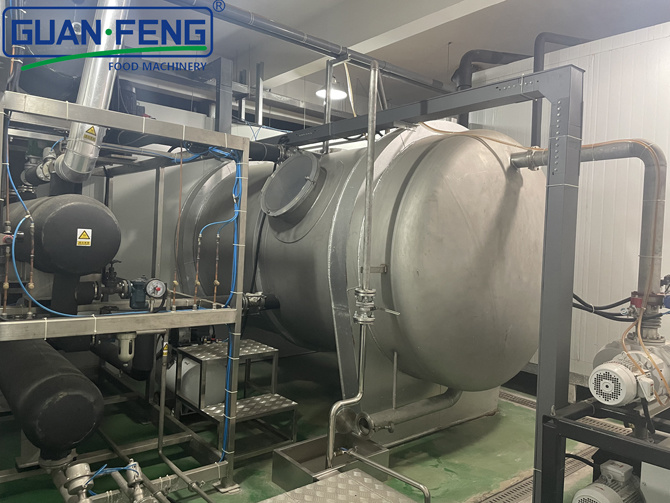BLOG
Focus on hot topics, real-time dynamics
A Step-by-Step Guide to Operating a Vacuum Freeze Drying Machine: Mastering the Art of Efficient Preservation
A Step-by-Step Guide to Operating a Vacuum Freeze Drying Machine
Vacuum freeze drying, or lyophilization, is an advanced preservation method widely used in various industries, including food production, pharmaceuticals, and biotechnology. This process not only enhances the shelf life of products but also maintains their quality, flavor, and nutritional value. In this detailed guide, we will take you through every step involved in operating a vacuum freeze drying machine effectively.
Table of Contents
- Understanding Vacuum Freeze Drying
- Key Components of a Vacuum Freeze Drying Machine
- Preparation of Materials for Freeze Drying
- Step-by-Step Operating Procedure
- Setting Up the Machine
- Loading the Materials
- Starting the Freeze Drying Cycle
- Monitoring the Freeze Drying Process
- Finishing the Freeze Drying Process
- Troubleshooting Common Issues
- Maintenance and Care for Your Freeze Drying Machine
- Applications of Vacuum Freeze Drying
- Conclusion
Understanding Vacuum Freeze Drying
Vacuum freeze drying is a dehydration process that involves freezing a product and then reducing the surrounding pressure to allow the frozen water in the product to sublimate directly from the solid phase to the vapor phase. This technique significantly reduces the moisture content in the material, which is crucial for long-term preservation.
The process typically involves three main stages: freezing, primary drying, and secondary drying. During freezing, the product is rapidly frozen to preserve its structure. The primary drying phase removes most of the water, while secondary drying eliminates any remaining moisture, ensuring the product is shelf-stable.
Key Components of a Vacuum Freeze Drying Machine
A vacuum freeze drying machine comprises several critical components that work together to achieve efficient drying. Understanding these parts will enhance your capability in operating the machine effectively.
1. Freezing Chamber
The freezing chamber is where the product is placed for the initial freezing phase. It is designed to maintain extremely low temperatures to ensure rapid freezing.
2. Vacuum Chamber
Once the product is frozen, it is moved to the vacuum chamber, where the pressure is significantly lowered. This chamber facilitates the sublimation of ice directly into vapor, avoiding the liquid phase.
3. Condenser
The condenser is responsible for collecting the vapor expelled from the product. It cools the vapor, turning it back into ice, which is then removed to maintain the vacuum.
4. Control System
The control system includes sensors and software that monitor temperature, pressure, and time throughout the freeze drying process. This ensures that the conditions remain optimal for preservation.
5. Heating Plates
Heating plates are integrated into the vacuum chamber and provide controlled heat to assist in sublimating moisture during the primary drying stage.
Preparation of Materials for Freeze Drying
Before operating a vacuum freeze drying machine, proper preparation of the materials is essential. This step can significantly impact the quality of the final product.
1. Selection of Materials
Choose materials that are suitable for freeze drying. Foods such as fruits, vegetables, and meats, as well as pharmaceuticals such as vaccines and blood plasma, are ideal candidates.
2. Preprocessing Techniques
Depending on the material, preprocessing might be necessary. For instance, fruits may need to be sliced to reduce drying time, while liquids might need to be placed in appropriate containers.
3. Blanching
For certain vegetables, blanching before freezing can help in preserving flavor, color, and texture. This process involves briefly boiling the vegetables and then rapidly cooling them.
4. Packaging
Using vacuum-sealed bags or containers can help reduce oxidation and contamination during the freeze drying process. Ensure that all packaging materials are compatible with the freeze drying environment.
Step-by-Step Operating Procedure
Operating a vacuum freeze drying machine involves a series of well-defined steps. Following this procedure carefully will ensure optimal results.
Setting Up the Machine
1. **Ensure the Machine is Clean**: Before beginning, clean the machine thoroughly to avoid contamination.
2. **Check Connections**: Inspect all hoses, seals, and valves to ensure there are no leaks.
3. **Power on the Machine**: Turn on the machine and allow it to reach the required temperature and vacuum levels.
4. **Calibrate Sensors**: Ensure that all sensors and controls are calibrated correctly to maintain precise conditions.
Loading the Materials
1. **Organize the Product**: Arrange the materials evenly on the trays to promote uniform drying.
2. **Insert Trays**: Place the trays into the freezing chamber securely.
3. **Seal the Chamber**: Ensure that the chamber is properly sealed to maintain the vacuum.
Starting the Freeze Drying Cycle
1. **Select the Program**: Choose the appropriate freeze drying program on the control panel based on the material being processed.
2. **Initiate the Cycle**: Start the freeze drying cycle and monitor the initial freezing phase.
Monitoring the Freeze Drying Process
1. **Track Temperature and Pressure**: Regularly check the temperature and pressure readings to ensure they remain within the desired range.
2. **Adjust Settings if Necessary**: If any fluctuations are detected, make adjustments to the settings promptly.
Finishing the Freeze Drying Process
1. **End the Cycle**: Once the freeze drying cycle is complete, carefully end the process on the control panel.
2. **Allow for Cool Down**: Let the machine cool down before opening the vacuum chamber.
3. **Unload the Product**: Remove the trays from the chamber and inspect the final product for quality.
Troubleshooting Common Issues
During the operation of a vacuum freeze drying machine, you may encounter some common issues. Here are practical solutions:
1. Insufficient Drying
If products remain moist after the process, check the temperature and pressure settings. Adjust them according to the manufacturer’s guidelines.
2. Freezer Burn
Freezer burn can occur if the product is exposed to air during the drying process. Ensure that the machine maintains a proper vacuum throughout.
3. Uneven Drying
To avoid uneven drying, ensure that the trays are not overloaded and that air can circulate freely around the materials.
Maintenance and Care for Your Freeze Drying Machine
Regular maintenance is vital to ensure the longevity and efficiency of your vacuum freeze drying machine.
1. Routine Cleaning
Clean the machine regularly to prevent contamination and buildup of residues. Follow the manufacturer's cleaning recommendations.
2. Inspect Components
Check all components periodically for wear and tear. Replace any damaged parts immediately to avoid operational issues.
3. Calibration
Perform regular calibrations of sensors and controls to ensure accuracy in measurements.
4. Professional Service
Schedule professional servicing annually to maintain optimal performance levels.
Applications of Vacuum Freeze Drying
Vacuum freeze drying has diverse applications across multiple industries, making it a valuable technology.
1. Food Preservation
Freeze drying is commonly used in the food industry to preserve fruits, vegetables, and ready-to-eat meals, enhancing shelf life while retaining flavor and nutrients.
2. Pharmaceutical Products
In pharmaceuticals, freeze drying is crucial for preserving vaccines, proteins, and other biologics, ensuring their efficacy and stability.
3. Biotechnology
Biotechnological applications of freeze drying include the preservation of microbial cultures and enzymes, ensuring their viability for research and commercial use.
Conclusion
Operating a vacuum freeze drying machine requires an understanding of the process and attention to detail. By following the steps outlined in this comprehensive guide, you can achieve exceptional results in preserving a wide range of materials. From the initial setup to the final product inspection, each phase plays a critical role in ensuring quality preservation. With proper maintenance and attention to common issues, you can maximize the efficiency and longevity of your freeze drying machine, enabling you to provide top-tier products in your industry.
Hot Tags:
PREVIOUS:
Contact Us
E-mail:
sales@syguanfeng.com
Tel:
+86 15088506234
Address:
South Industrial Park of Dongguan, Shangyu District, Shaoxing City,Zhejiang Province,China.
GUANFENG, your customization experts!
GUANFENG FOOD MACHINERY - leading supplier of integrated food processing solutions
Copyright© 2024 ZHEJIANG GUANFENG FOOD MACHINERY CO.,LTD.










